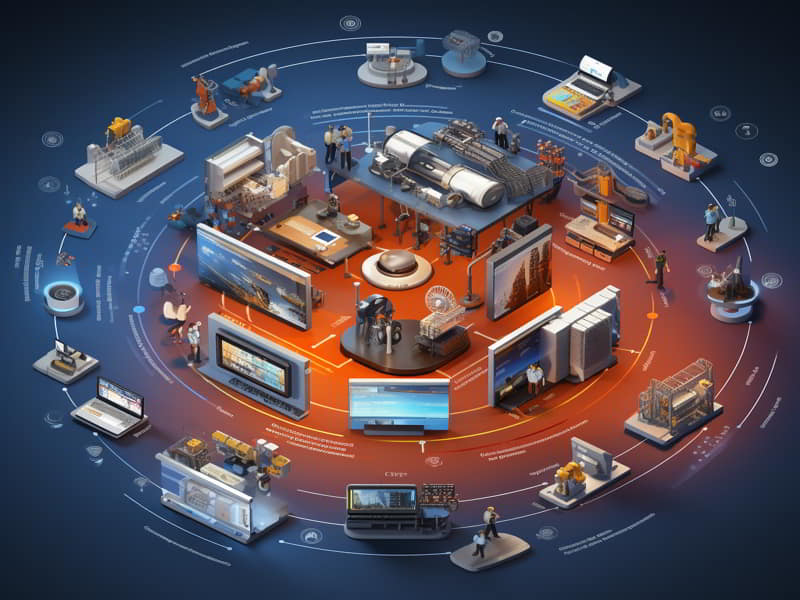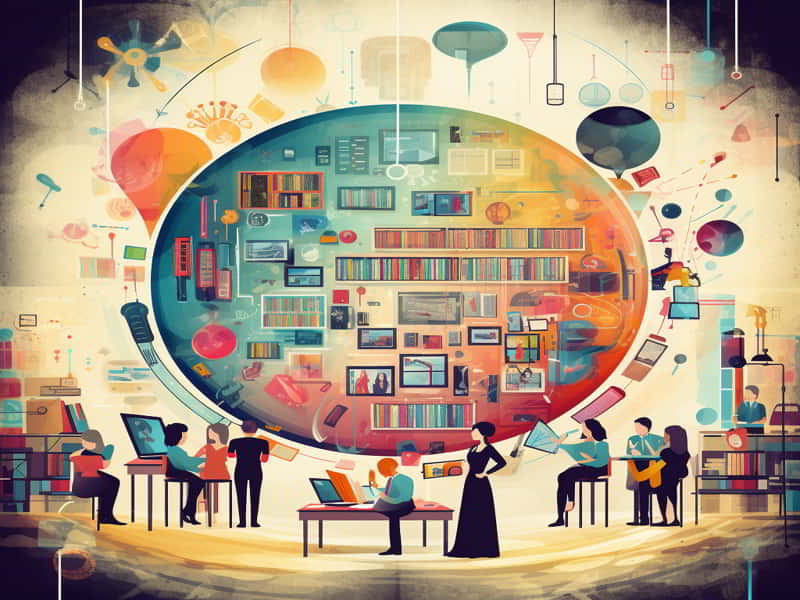ITIL Interview Questions | ITIL Basic Interview Questions
ITIL is a framework for IT Service Management (ITSM) that aligns IT services with business needs.
It provides a set of best practices and techniques for selecting, planning, delivering, and maintaining IT services within a business.
This ITIL interview questions blog will deal with ITIL process interview questions, frameworks.
ITIL Interview Questions and Answers:

What Is ITIL?
ITIL (Information Technology Infrastructure Library)is a framework developed to assist businesses manage and enhance their Information Technology services and increase efficiencies.
What are the Benefits of ITIL?
ITIL offers several key advantages that include decreased costs and high-quality services as well as increased business productivity, improved return on investment, customer satisfaction ratings and resource utilisation improvements.
Which version of ITIL has recently been released?
ITIL 4, released in February 2019, is currently the latest edition.
What are the goals of ITIL 4?
ITIL 4 emphasizes value creation rather than service provision, with results reflecting how customers benefit from product or service features and functionality.
What is co-creation in business?
Co-creation is an approach used by organizations and consumers alike that seeks to deliver products or services according to consumer demands, offering better experiences and providing feedback directly.
What are the four dimensions of services?
Services can be defined in four ways – organizations, people, information technology partners and suppliers as well as value streams and processes.
What is the Service Value System?
The ITIL framework includes an IT Service Value System to give an in-depth view of everything involved with creating value and provide insight on this key pillar of service management.
What are the seven principles of the service value system?
These seven principles include focus on value, progress, high-to-weighted feedback, simplicity and practicality, collaboration and promotion of visibility as well as optimizing and automating services.
What role does government have in IT service management?
Governments play an essential part in overseeing, guiding and overseeing IT service management by adopting ITL4 framework guiding principles as an evaluation mechanism.
What are the components of engagement process and its main elements?
Engagement involves planning by creating plans, portfolios, architectures and policies which give an organization direction and clarity.
A holistic approach must also be employed when understanding services being provided as well as any value that they create; people with analytical management capabilities and visualization ability will find this approach most helpful.
When visualizing services from end to end; engaging stakeholders is vital when understanding consumer and user requirements and needs.

ITIL Training

What are the primary elements of designing services?
Designing doesn’t provide a blueprint, but rather provides an overall perspective that considers all four dimensions of services and their impact: obtain, build, acquire resources/components/infrastructure components like servers/storage/database/application platforms etc; deliver/support.
Why is Continuous Improvement Essential in Services?
Continuous improvement is integral to service value chains, from component level through integration, service provision and business contribution levels. At each of these points of improvement it should be measured for effectiveness using performance measurements at each stage .
This allows insight into whether services meet required or planned performance; if everything’s going according to plan then finding opportunities for enhancement should be encouraged while any discrepancies must be addressed immediately by making corrections as soon as possible.
Can you describe some IT practices designed to achieve certain service-provider objectives?
At present there are approximately 34 management practices designed to achieve certain objectives of services. They do not pertain solely to one lifecycle stage but have high degrees of complexity – examples being incident management, change management, service design transition operation management continual service improvement management information security management etc.
Which are the primary focus areas of ITIL V3 service management framework?
ITIL V3 Service Management Framework enumerates five life cycle stages as part of their service management framework: service strategy, design, transition, operation and continual service improvement.
Every process throughout this life cycle such as the Service Level Agreement (SLA) service level agreement are universally managed throughout. Information security management also forms a critical aspect of service life cycles as it does not apply solely to services provided by service providers alone.
In what capacity is relationship management used within service management?
Relationship management refers to managing relationships among various organizations and stakeholders such as service product organizations and customer organizations.
Relationship management’s primary function is to foster positive connections among organizations and stakeholders for effective collaboration and transactions that drive successful businesses.
All practices encompassing strategic management, portfolio management, architecture management, service financial management, workforce and talent management, continual improvement measurement reporting risk management knowledge organization change project supplier management should all be examined from an organization wide perspective.
What are the purposes of ITL 4 Foundation Certification?
This entry-level certification serves to introduce key elements, core concepts and terminologies used within ITL 4. Essentially this serves as the cornerstone to further certifications within this industry.
Can You Explain ITIL Certifications?
There are various levels of ITIL certification, from specialist certificates and strategies modules through ITIL managing professional status.
To become an ITIL managing professional, four modules must be completed: create deliver and support; drive stakeholder value creation and drive high velocity ITIL performance directly plan improve performance as well as digital and ITIL strategy planning and digital ITIL Strategy planning and strategy implementation.
Can you describe the format for ITIL 4 Foundation Examination?
Yes. The exam takes an hour with 40 multiple-choice questions with a score requirement of 26 (65%).
Which factors influence International Tax Lien (ITL) policies and processes?
Four primary considerations that influence ITL include politics, economy, society, technology and legal/environmental concerns.
Why did ITIL introduce the service value system?
ITIL’s service value system assists organizations to better align IT services with stakeholder expectations while continually improving them.
What role does governance play in ITIL service value system?
Governance plays an integral part in ITIL’s service value system by overseeing evaluation, direction and monitoring activities within an ITS framework to assist organizations achieve their goals and objectives.
What Is ITIL’s Service Value Chain?
ITIL’s Service Value Chain comprises activities to achieve service value through outputs and outcomes; these may be tangible products or services produced, while outcomes represent any additional advantages brought to organizations as a result of taking such actions.
Which management practices make up ITIL’s Service Value Chain?
There are 34 management practices found within its Service Value Chain that fall under different categories such as general, service and technical practices.
Why does ITIL need architecture management?
ITIL architecture management aims to gain an in-depth knowledge of an organization’s structure and elements so as to enable constant alignment among services and practices.
What is the Purpose of Continuous Improvement in ITIL?
Continuous improvement within ITIL seeks to identify opportunities for advancement within business operations, service experience delivery, culture and market requirements.
What is the purpose of information security management under ITIL?
Information security management ensures the protection of information from its inception to completion.
What is Relationship Management in Services?
Effective relationship management is vital to successful services as it involves maintaining contact between consumers, consumers, suppliers and service providers at various levels.

ITIL Online Training

What are the Key Principles of Risk Management in Services?
Risk management must be implemented across an entire organization in order to effectively deliver services and create value.
What Are Service Financial Management Systems (SFMSs)?
Service financial management systems such as budgeting, accounting and charging aid services in making smart investments while tracking the investments made over time.
What is Strategy Management in Services?
Strategy management aims at setting clear directions and goals for every service investment made, providing specific routes towards reaching that objective and creating specific strategic directions and plans.
Why is Supplier Management Essential in Services?
Supplier management is crucial to organizations providing services as they may rely on outside suppliers.
What are Workforce and Talent Management Services?
Workforce and talent management in services involves making sure there is the ideal mix of people who possess all necessary abilities and capabilities for any given position.
What are service management practices?
Service management practices include availability management, business analysis, capacity and performance management, change control, incident management, ITSS management monitoring/event/problem management as well as problem/risk/issue resolution management.
What is availability management in services?
To put simply, availability management ensures services meet customers’ and providers’ promises and satisfy business requirements.
What services does business analysis encompass?
Business analysis provides organizations with tools for finding solutions to business issues while aligning them with organizational objectives.
What are Capacity and Performance Management Services in General?
Capacity and performance management services involve assuring sufficient capacity is in place to fulfill service demand, optimizing capacity based on market fluctuations and shaping customer behaviour accordingly.
Change control refers to any practice by which changes to an environment can be implemented with approval from authorized entities, before being made official and implemented into production.
What is incident management in services?
Incident management is used in IT services management to oversee assets that support it service delivery over their full life-cycle.
What is Monitoring and Event Management (MEM) in Services?
Monitoring and event management refers to observing IT environment events while learning more about potential causes or actual incidents that could arise in this way.
What are the principles and applications of problem management services?
Proactive problem management seeks out potential issues before providing workarounds or resolutions, while reactive problem management handles incidents when they become major incidents.
What Is Release Management in Services?
Release management refers to releasing specific versions of services or configuration items together at one time – typically comprising multiple infrastructure applications.
What is Service Continuity Management in Services?
Service continuity management involves assuring at least some services remain functional to prevent business disruption even under disaster scenarios.
What are service desks?
Service desks provide users with a means of reporting issues or providing requests or providing feedback relating to products. In addition, these channels also help validate incidents reported by users and acknowledge incidents raised as tickets by them.

What exactly are software development and management services?
Software development and management services focus on deploying developed applications or purchasing them through application software providers for use within businesses or applications.
What is Continuous Service Improvement?
Continuous service improvement is an integral element of service value systems as it ensures all services continue to receive upgrades on an ongoing basis.
Can you describe the four dimensions of the service value system?
These four aspects include organization people, information technologies and systems, partners/suppliers as well as value streams/processes.

ITIL Course Price


Prasanna
Author